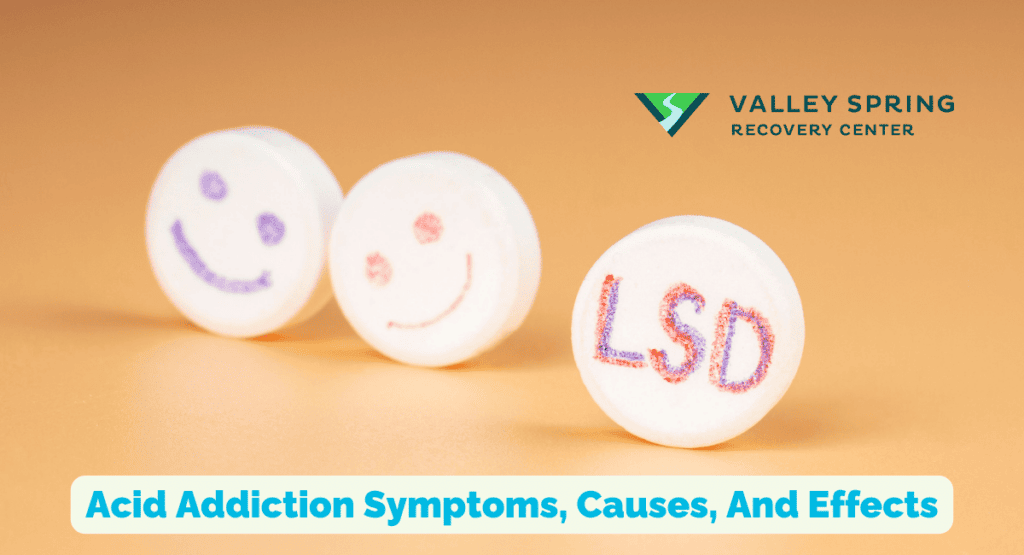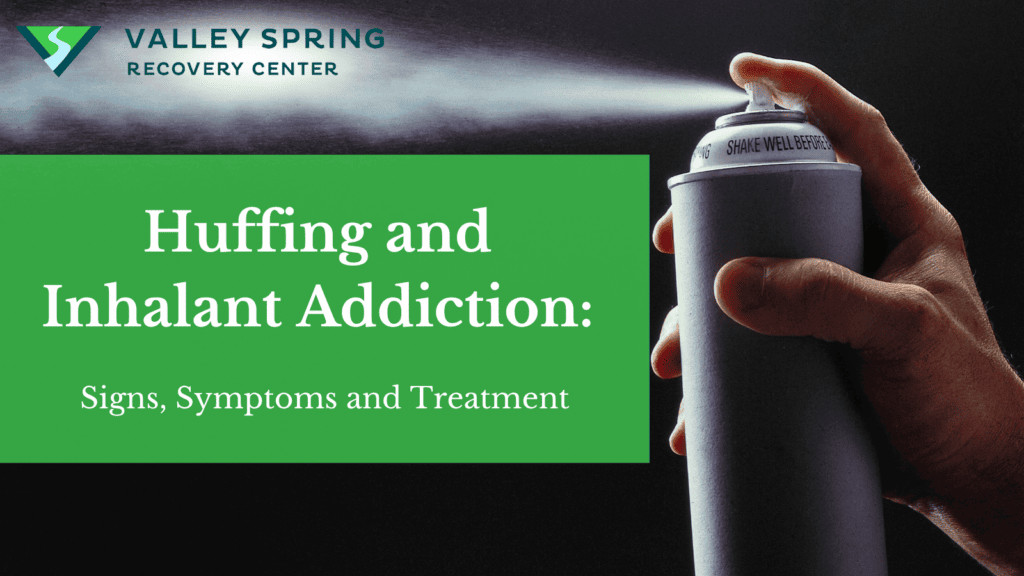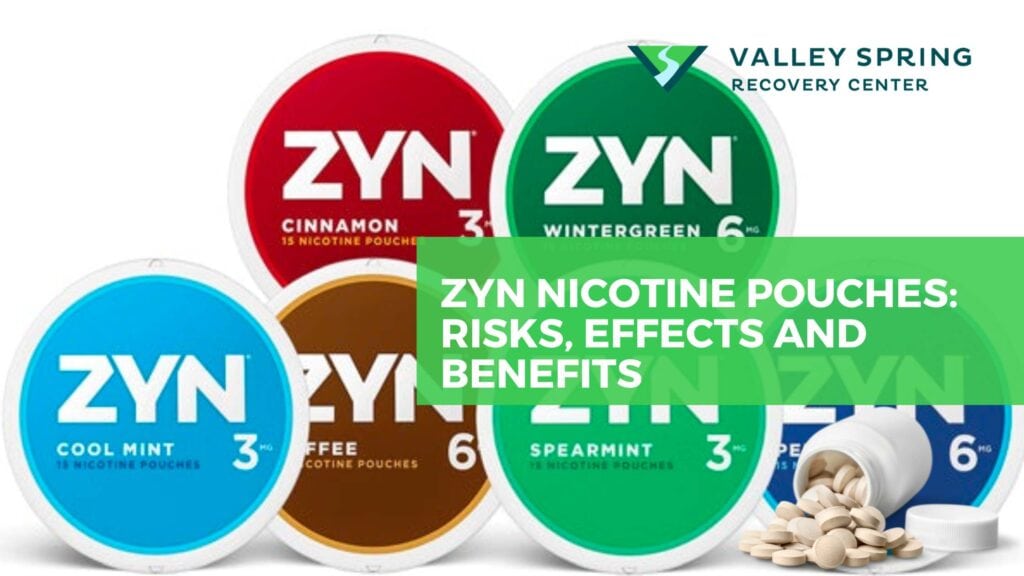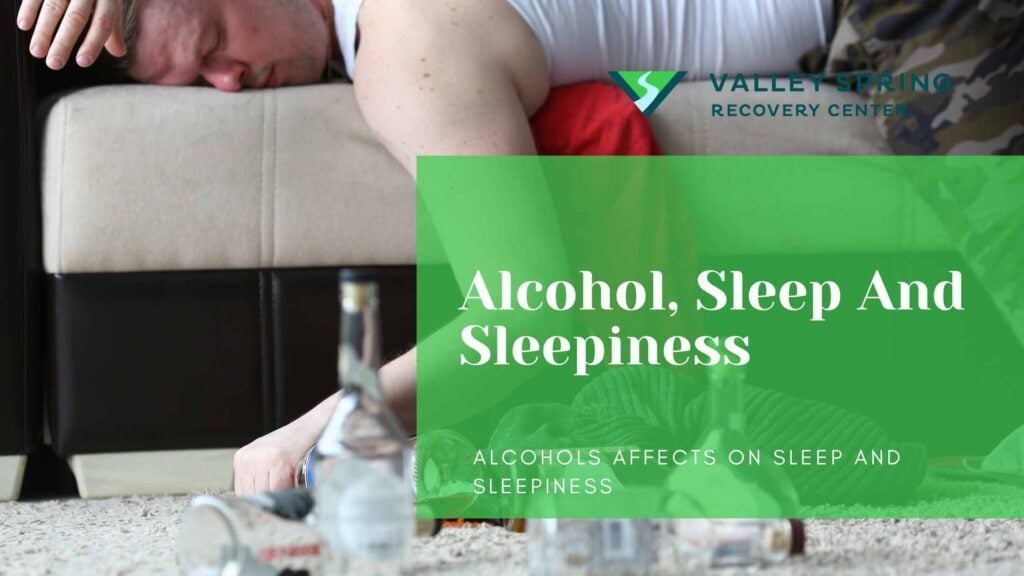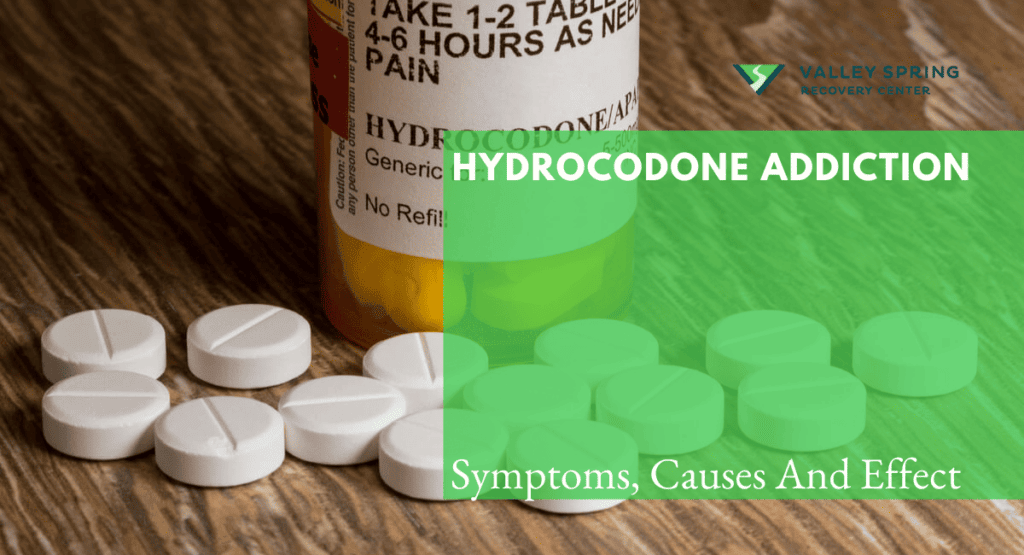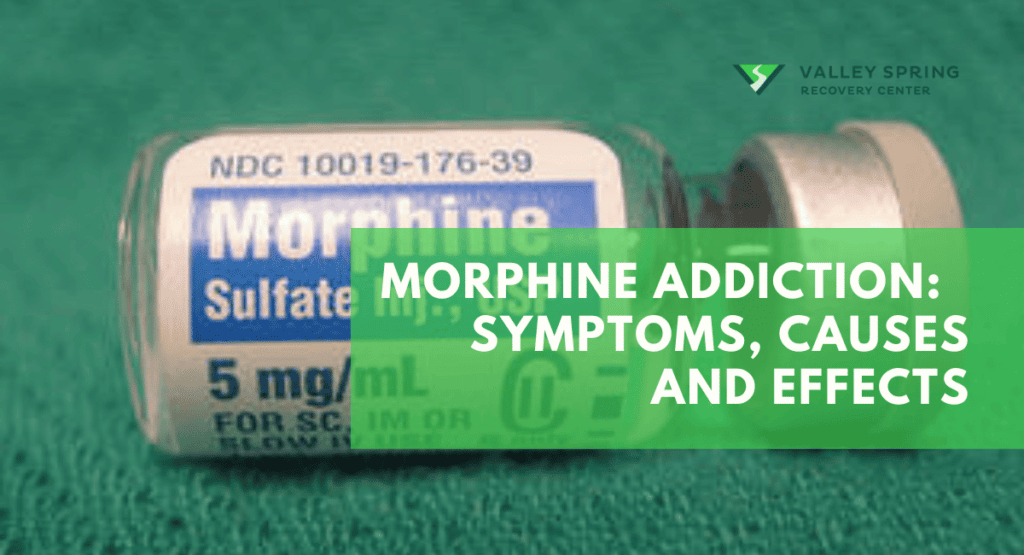Lysergic acid diethylamide (LSD ), commonly known as Acid, is a potent, psychedelic drug. Taking LSD can result in intensified thoughts, emotions, and sensory perception. At sufficiently high dosages LSD manifests primarily mental, visual, and auditory hallucinations.
The causes of acid addiction can vary but often stem from a combination of factors like genetic predisposition, underlying mental health issues, peer pressure, trauma, and a desire to escape reality.
The effects of acid addiction can wreak havoc on your life and those around you, causing physical deterioration, psychological distress, strained relationships, financial troubles, legal issues, and a loss of control. Remember, recovery is possible with the right support and determination.
What is LSD (Acid) Addiction?
lysergic acid diethylamide (LSD) addiction also sometimes called acid addiction, refers to a compulsive and harmful pattern of using hallucinogenic substances. LSD is not physically addictive like opiate drugs but mental, emotional, and behavioral dependence can occur. LSD use between 2002 and 2019 increased overall and in all age groups, with the 12-month rate increasing from 0.9 percent in 2002 to 4 percent in 2019 for those 18-25 years of age according to a study by researchers at Columbia University Mailman School of Public Health and Columbia University Irving Medical Center.
Public perception towards LSD use has grown more positive, specifically around the benefits of ‘mcrodosing’ according to Deborah Hasin, PhD., professor of epidemiology (in psychiatry) at the Columbia University Irving Medical Center, and senior author of the study. According to Hasin, increased use of hallucinogens warrants the implementation of preventive strategies and should be recognized as a growing public health concern.
Although acid is considered a non-addictive drug with low risks of overdose and a non-existent chance of fatal overdose, if you consistently use the substance, you may become addicted to the feelings, sights, sounds, and revelations you get when you use it, leading to craving and dependence.
Acid, specifically referring to lysergic acid diethylamide (LSD), is a synthetic hallucinogenic drug commonly known by other names like lucy or doses. It is chemically synthesized from lysergic acid, which is derived from a fungus called ergot. The production of LSD involves complex laboratory processes where lysergic acid is chemically modified and combined with other substances.
Acid is typically developed in clandestine laboratories or illicit settings, where unlicensed individuals with knowledge of chemistry and access to precursor chemicals engage in the synthesis. These laboratories aim to produce a potent and pure form of LSD, often in the form of small squares of absorbent paper known as “blotters.” These blotters are impregnated with a precise amount of LSD, which can then be consumed orally or through other means.
Acid is one of the most used substances among young people aged 12 to 25, with more than 3.1 million people in that age bracket experimenting with the substance, according to a 2008 study. (Addiction Center)
When Does LSD Start to Take Effect After Taking it?
When you ingest LSD, commonly referred to as “acid,” you embark on a journey often termed as “tripping.” The onset and duration of this trip depend on various factors, including age, dosage, metabolism, and even liver health. Here’s a breakdown based on scientific studies:
- Oral Dose (100-250 micrograms): Effects manifest within 30-45 minutes post-ingestion. Peak experiences occur between 1 to 2.5 hours, with the trip lasting 9-12 hours.
- Intramuscular Injection (100-250 micrograms): Feel the effects in as little as 15 minutes, peaking within the first hour. The trip usually lasts 9-10 hours.
- Intravenous Injection (40-180 micrograms): Almost immediate effects, peaking at around 1 hour and lasting for 9-10 hours.
- Intraspinal Dose (20-60 micrograms): Effects start within an hour, peaking soon after, and last for 9-10 hours.
What to Expect From Taking LSD
Once the LSD takes full effect, you may experience a range of sensations, both positive and negative:
- Euphoria
- Anxiety
- Vivid Hallucinations
- Elevated Heart Rate
- Impaired Judgment
- Mood Swings
A “good trip” is a positive experience, while a “bad trip” can be quite the opposite, filled with anxiety and paranoia.
How Long Does LSD Remain in Your System?
Determining how long LSD stays in your system is complex due to its natural origins and metabolic pathways. After oral ingestion, it is absorbed by the gastrointestinal tract and enters the bloodstream, eventually reaching the brain and other organs like the liver, where it is metabolized. Here is how long LSD shows up on a drug test:
- Urine: Standard drug tests often fail to detect LSD. Specialized techniques like liquid-liquid extraction and ultra-high-performance liquid chromatography-tandem mass spectroscopy are more effective. Roughly 1% of LSD is excreted via urine within 24 hours.
- Hair: Hair follicle tests can detect drug use up to 90 days prior but are less reliable for LSD due to its low dosage levels.
- Blood: LSD can be detected in the blood for up to 16 hours, depending on the dosage.
What Is The Comedown and Afterglow?
The comedown is the phase when the initial high wears off, often leaving the individual emotionally drained. Rehydration is crucial as LSD can cause increased sweating. Some people experience an “afterglow,” a prolonged sense of well-being, which has sparked interest in the potential therapeutic uses of psychedelics for conditions like depression.
What Happens When You Take LSD?
First-time users often have mixed feelings ranging from excitement to apprehension. Your emotional state can significantly influence your trip. Those with pre-existing anxiety or stress disorders may find their symptoms exacerbated during the trip.
What Is A Bad LSD Trip Like?
A bad trip is characterized by heightened anxiety, panic, and even suicidal thoughts. Individuals with a family history of mental disorders like schizophrenia should avoid LSD as they are at higher risk for adverse effects. Always have a trusted friend accompany you during the trip to ensure safety.
What are the signs and symptoms of Acid addiction?
LSD isn’t physically addictive like other substances such as cocaine and even Marijuana but that doesn’t mean people don’t take it repetitively. Individuals can become addicted to the effects of tripping. If you or someone you know is dealing with acid (LSD) addiction, you might notice:
- Frequent Use: You find yourself using LSD more often than you originally planned or intended.
- Craving: Over time, you may realize that you need to take larger doses to achieve the same effects, which can be concerning.
- Impossible to stop: It becomes difficult to stop using, even when it’s causing problems in your life.
- Daily Life Suffers: Work, school, and relationships may start to suffer because your focus is mainly on using LSD.
- Mood Swings: You experience noticeable mood swings, swinging from extreme happiness to moments of sadness or anxiety.
- Withdrawal: When you’re not using LSD, you might feel anxious, down, or struggle to concentrate, which pushes you to keep using.
- Isolation: You might find yourself pulling away from friends and family who don’t support your drug use, leading to feelings of isolation.
- Risky Behavior: Under the influence of LSD, you may engage in risky behaviors, like driving under the influence or having unsafe sex.
- Neglecting Health: Your physical health could suffer as you neglect self-care, such as poor eating habits and inadequate sleep.
These symptoms will vary from person to person, and you may only experience one or a combination of a few of these symptoms. However, if you recognize these symptoms after heavy and consistent use of acid, you should speak with a specialist to tackle the addiction early on.
What makes LSD addictive: How does it affect the brain?
When you consume acid, it interacts with specific receptors in your brain, primarily targeting the serotonin system. This leads to a surge in serotonin levels, which can result in intense sensory experiences, altered perception, and hallucinations.
The addictive nature of LSD psychedelics lies in its ability to create profound psychological effects. It can produce euphoria, a sense of expanded consciousness, and a distorted perception of time and reality. These experiences can be highly pleasurable and enticing, leading to a desire for repeated use.
Additionally, taking LSD can disrupt the normal functioning of neurotransmitters and neural circuits in the brain. Prolonged use can lead to changes in the brain’s reward system, making you crave the drug and rely on it to experience pleasure or escape from reality. Over time, this can result in tolerance, where larger doses are needed to achieve the desired effects and withdrawal symptoms when attempting to quit.
A 2016 study stated that LSD causes changes in the brain’s electrical activities and blood flow (PNAS). These changes in the blood flow and electrical activity can also affect cognition, memory, and emotional regulation.
It can contribute to mood disorders and anxiety and even trigger or worsen underlying mental health conditions. These effects can perpetuate the cycle of drug use as individuals may turn to LSD hallucinogens as a coping mechanism, further reinforcing the addictive behavior.
What are the causes of LSD addiction?
The causes of LSD addiction can vary from person to person, but several factors may contribute to its development in your life or the life of someone you care about. Some of those factors include the following:
- Genetic predisposition: You may have a genetic vulnerability that increases the likelihood of developing an addiction. A family history of substance abuse can play a role in determining your susceptibility.
- Underlying mental health issues: Pre-existing mental health conditions, such as depression, anxiety, or trauma-related disorders, can make you more vulnerable to seeking solace or escape through drug use, including acid.
- Peer pressure and social environment: Influences from friends, social circles, or environments where drug use is prevalent can impact your decision to experiment with acid and potentially develop an addiction.
- Coping mechanism and self-medication: Acid might be used as a way to cope with stress and emotional pain or to self-medicate underlying emotional or psychological struggles. This can create a cycle of dependence.
- Curiosity and experimentation: Some individuals may try acid out of curiosity or a desire for novel experiences. However, continued use can lead to dependence and addiction.
- Traumatic experiences: Traumatic events, such as abuse, neglect, or significant life changes, can contribute to the development of addiction as a means to escape or numb emotional pain.
It’s important to understand that addiction is a complex interplay of various factors, and these causes can interact differently for each individual.
What are the effects of LSD?
The effects of acid addiction are similar to those of other more harmful substances, even though LSD is slightly less damaging. If you or a loved one have been misusing acid in large doses and for a long time, you may be exposing yourself to adverse physical, psychological, and emotional challenges. Here’s a breakdown of the effects of acid addiction:
- Physical effects:
- Potential organ damage
- Impaired coordination and motor skills
- Sleep disturbances
- Nutritional deficiencies
- Increased risk of accidents or injuries
- Psychological effects:
- Psychosis or hallucinogen persisting perception disorder (HPPD)
- Anxiety disorders
- Mood swings and emotional instability
- Cognitive impairments
- Paranoia or delusions
You may also have to deal with the negative effects of this substance on your relationships, finances, and control of your daily life. If you or a loved one are dealing with acid addiction, there’s no better time than right now to speak with a specialist for immediate help to eliminate the chances of it becoming more severe.
What crazy things do you see on Acid?
LSD is famous for altering your perception and making you see some beautiful and wild things in psychedelic, vivid hallucinations. It’s common for parents to tell the warning stories from the 60s of their friend who started believing he was a “cantaloupe” and ended up jumping off a bridge from taking acid and then living in a perpetual tripping state. In reality, that rarely happens unless someone takes an excessive amount of LSD for an extended period of time. However, some of the hallucinations can feel very real and be very intense.
How do people consume acid?
People typically consume acid in various ways. The most common method of consumption is orally, where a small paper square or “blotter” containing a pre-determined dose of LSD is placed on the tongue and allowed to dissolve. The drug is absorbed through the mucous membranes in the mouth and enters the bloodstream.
Using this method, you may begin to experience initial effects within 60 to 90 minutes. Colors may begin to appear brighter to you, and sounds become amplified. You may also begin to see images that are not there.
Other methods of consumption include swallowing tablets or capsules that contain LSD, consuming LSD-infused candies or gummies, or placing LSD drops or liquid onto food or beverages. In some cases, some users may also choose to inject liquid LSD intravenously, although this method is relatively rare.
Spring Valley Recovery Is Only One Phonecall Away
What are the Treatment Options for Acid Addiction?
If you or a loved one have misused acid (LSD) and are seeking the most effective treatment to eliminate the effects and help you stay clean, you may need a combination of behavioral therapies, counseling, and support systems. While acid may not be associated with an uncontrollable drug-seeking behavior, it can become a source of worry to you as you begin to slowly but gradually become dependent on the substance:
- Detoxification: While LSD does not cause physical dependence, a supervised detoxification process may still be necessary to address any residual psychological effects or withdrawal symptoms.
- Therapy and Counseling: Behavioral therapies such as cognitive-behavioral therapy (CBT), motivational interviewing, and individual or group counseling can help address the underlying causes of addiction, develop coping mechanisms, and prevent relapse. Therapy and counseling can come in the form of inpatient or outpatient treatment. Choose what works for you and stay true to it until full recovery.
- Support Groups: Participating in support groups like Narcotics Anonymous (NA) or other recovery programs can provide a sense of community, understanding, and ongoing support from individuals who have faced similar challenges.
- Dual Diagnosis Treatment: If there are co-occurring mental health disorders alongside acid addiction, an integrated treatment that addresses both conditions simultaneously may be necessary.
- Holistic Approaches: Complementary and alternative therapies like meditation, mindfulness practices, art therapy, or yoga may be incorporated to support overall well-being and stress reduction.
- Medication: While there is no specific medication approved for treating acid addiction, certain medications may be prescribed to manage co-occurring mental health conditions or to alleviate specific symptoms associated with withdrawal or cravings.
- Aftercare and Relapse Prevention: Developing a comprehensive aftercare plan that includes ongoing support, relapse prevention strategies, and regular check-ins with healthcare professionals can be crucial for long-term recovery.
You must consult with a healthcare professional or addiction specialist who can assess your specific needs and recommend a tailored treatment plan. Remember, recovery is a journey, and with the right support and dedication, it is possible to overcome acid addiction and live a healthier, fulfilling life.
How long does it take to detox from LSD Addiction?
Detoxification from acid addiction typically does not require a prolonged or medically supervised detoxification process. Unlike some other substances, LSD does not result in physical dependence or severe withdrawal symptoms.
The effects of LSD usually wear off within 6 to 12 hours after consumption. After this period, you will generally not experience any physical withdrawal symptoms associated with LSD discontinuation. However, you may have to deal with psychological and emotional effects, which may persist for some time.
If, however, you choose to go for detoxification to speed up your recovery process, it’s crucial to note that the detoxification process may vary for each individual. Additionally, the timeline for recovery from addiction is influenced by factors such as the frequency and duration of use, your overall health, the presence of any co-occurring mental health conditions, and the quality of treatment you receive.
While detoxification may not require extensive medical intervention, it is still advisable that you seek professional guidance and support during the recovery process. This can help address the psychological and emotional aspects of addiction, develop coping mechanisms, and establish a foundation for long-term recovery.
Are there withdrawal symptoms associated with Acid addiction?
Unlike other harmful, addictive substances like opioids and alcohol, LSD (acid) does not produce severe physical withdrawal symptoms. However, discontinuing LSD after prolonged use can result in psychological and emotional effects, often referred to as a “comedown” or “afterglow.”
These effects may be psychological and emotional and may not be present or as strong in some people as others. If you’re concerned about withdrawal from acid, below are some symptoms to look out for:
- Mood swings: Fluctuations in mood, ranging from feelings of euphoria and happiness to irritability, anxiety, or depression.
- Fatigue: A sense of tiredness or low energy levels.
- Psychological distress: Some individuals may experience anxiety, restlessness, or emotional discomfort.
- Flashbacks: Intermittent re-experiencing of LSD-induced visual or sensory distortions, known as “flashbacks,” can occur during the withdrawal phase or even months or years later (a condition known as hallucinogen persisting perception disorder or HPPD).
These symptoms are typically temporary and tend to subside over time as your body and mind adjust back to their pre-LSD state. By working with an experienced addiction therapist, you can expect a wholesome recovery.
What is the difference between lsd and magic mushrooms?
LSD (Lysergic Acid Diethylamide) and magic mushrooms (Psilocybin) are both psychedelic substances, but they have distinct differences in their chemical composition, duration of effects, and cultural history. LSD is a synthetic compound, while magic mushrooms contain the naturally occurring psychedelic compound psilocybin.
LSD typically has a longer duration of effects, lasting up to 8-12 hours, whereas the effects of magic mushrooms usually last around 4-6 hours. The onset of LSD is generally quicker, often within 20-60 minutes, compared to magic mushrooms, which can take up to an hour or more. LSD is often ingested in the form of tabs, liquid, or gel, while magic mushrooms are usually consumed dried or brewed into tea. Culturally, magic mushrooms have been used for centuries in religious and shamanic rituals, whereas LSD was discovered in the 20th century and is often associated with the counterculture movement. Both substances are classified as Schedule I drugs in the United States, meaning they are illegal and considered to have a high potential for abuse and no accepted medical use.
What Are The Benefits of LSD?
Lysergic acid diethylamide (LSD) has been a subject of scientific curiosity for its potential therapeutic benefits. Recent studies have begun to shed light on how this psychedelic substance can have long-lasting positive effects on well-being, life satisfaction, and even personality traits.
According to a study published in Psychopharmacology by Schmid, Yasmin, and Matthias E Liechti, a single dose of 200 μg LSD administered to healthy subjects led to significant increases in positive attitudes about life, mood changes, altruistic social effects, and well-being that lasted up to 12 months. The study found that “10 of 14 participants rated their LSD experience as among the top 10 most meaningful experiences in their lives” (Schmid, Yasmin, and Matthias E Liechti, Psychopharmacology, 2018).
Final thoughts on acid addiction
Acid addiction, specifically LSD (lysergic acid diethylamide) addiction, can have significant psychological effects. While physical withdrawal symptoms are usually not severe, psychological distress and mood swings can occur during the withdrawal period. LSD is a hallucinogen or psychedelic so the effects, symptoms and recovery from abuse is different than other categories of drugs like Alcohol or opiates which may have different and more severe physical effects or stimulants like Adderall which are both mental and physical but still less intense than opiates or alcohol.
Treatment options include therapy, counseling, support groups, and developing coping mechanisms. Seeking professional help is crucial for addressing the psychological aspects of addiction and achieving long-term recovery. Speak with our admissions counselor today to receive intensive treatment for your acid addiction and be on your way to full recovery!
Sources
https://www.addictioncenter.com/drugs/hallucinogens/lsd-addiction/
https://www.pnas.org/doi/10.1073/pnas.1518377113
Schmid, Yasmin, and Matthias E Liechti. “Long-lasting subjective effects of LSD in normal subjects.” Psychopharmacology vol. 235,2 (2018): 535-545. doi:10.1007/s00213-017-4733-3
Dr. Michael Olla
All author postsShare This Post

